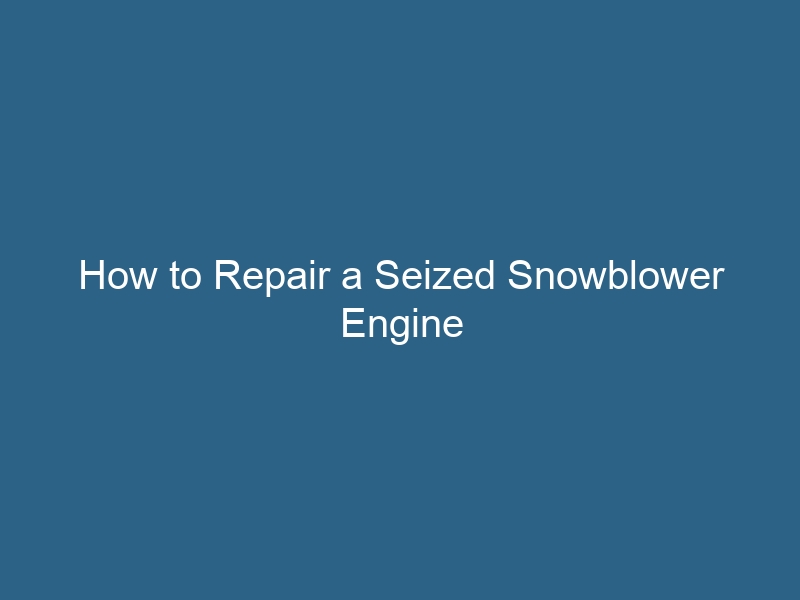Quck answer
A seized snowblower engine can be fixed by following these steps:
1. Disconnect the spark plug wire and remove any debris from the engine.
2. Check the oil level and add oil if necessary.
3. Spray a penetrating oil into the cylinder and let it sit for a few hours.
4. Try turning the engine manually using a wrench or socket on the crankshaft.
5. If the engine still doesn’t turn, remove the spark plug and spray more penetrating oil into the cylinder.
6. Let it sit overnight and try turning the engine again.
7. If the engine still won’t turn, it may need professional repairs or replacement parts.
A snowblower with a seized engine becomes completely useless because it cannot run. Fixing a seized engine involves removing the spark plug, draining the oil and gasoline from the motor, and adding an engine release/anti-seize solution directly into the engine block. Even if you have never encountered this problem before, you can still perform these steps to repair your seized snowblower engine.
Step 1
Disconnect the spark plug on the snowblower’s engine. The spark plug can be found either on the top or along the side of the engine block, depending on the specific engine type. It is connected to the engine by a thin, black ignition wire. Pull the ignition wire out from the back of the spark plug. Set the spark plug aside.
Step 2
If the spark plug and spark plug hole of the engine are located on the side rather than the top, drain the engine of oil and gas before proceeding with further troubleshooting. This prevents oil and gas from flooding certain areas of the engine when you manipulate it during troubleshooting. Locate the oil drain plug on the bottom rear of the snowblower and place a pan beneath it. Remove the plug to drain the oil from the machine.
Step 3
Siphon the gas out of the snowblower’s gas tank. Remove the gas cap from the tank and insert a clear, plastic tube into the tank for siphoning. Place an empty handheld gas tank on a surface that is lower than the snowblower’s gas tank.
Step 4
Put the other end of the plastic tube into your mouth and slowly inhale. Observe as the gas rises up the clear, plastic tube. Stop inhaling when the gas is still far from reaching your mouth. Remove the tube from your mouth and immediately cover the end of the tube with your thumb to maintain pressure.
Step 5
Place the end of the tube into the empty gas tank and release your thumb. Allow all the gas to flow out of the snowblower and into the handheld gas tank. Remove the tube from the snowblower.
Step 6
Position the engine so that the spark plug hole leading into the engine is facing upwards. Pour the engine release/anti-seizing liquid into the engine through the spark plug hole. Follow the instructions on the bottle to determine the appropriate amount to insert into the engine.
Step 7
Let the engine sit unused for at least 24 hours.
Step 8
Reposition the engine to its original position and place the spark plug back in. Reconnect the ignition wire to the spark plug.
Step 9
Remove the oil cap of the engine and add fresh oil. Remove the gas cap and fill the snowblower’s gas tank with the siphoned gas from the handheld tank.
Step 10
Start your snowblower. The engine will no longer be seized, but keep in mind that you may need to make multiple start attempts and pulls on the engine’s recoil rope before it starts properly.


